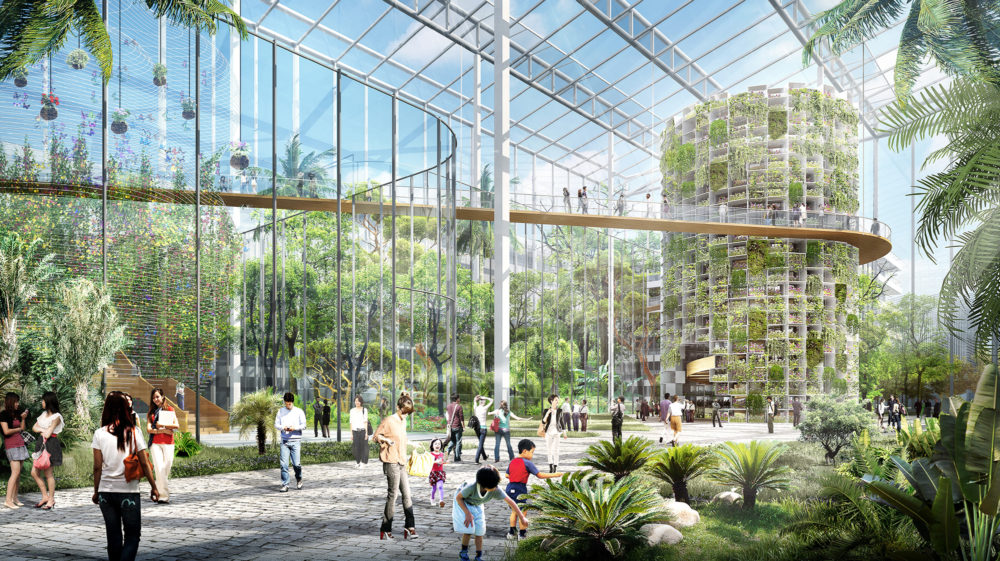
Sunqiao Urban Agricultural District
Shanghai, China
 Sasaki
Sasaki
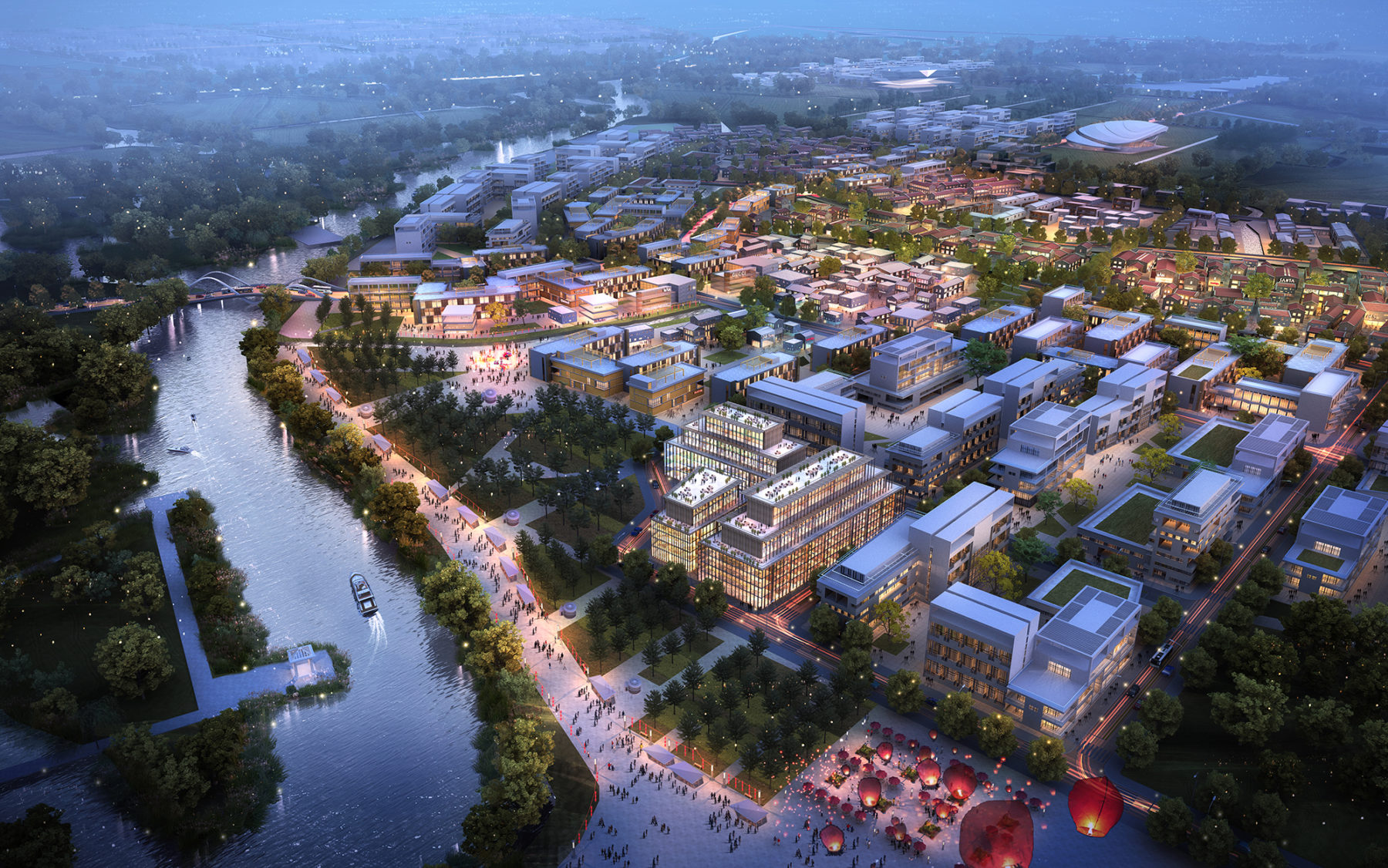
Although many of us in the Western world think of the “Made in China” economy as being driven by manufacturing, China is actually the world’s largest producer and consumer of agricultural products. In fact, the agricultural sector represents approximately 13% of China’s total GDP—and feeds 20% of the world’s population. But between 1997 and 2008, China lost over 123,000 square kilometers (47,500 square miles) of farmland to urbanization—a land area equivalent to nearly the entire state of Iowa. To counter the argument that “progress” means that farmland must be sacrificed in the name of other uses, Sasaki’s master plan for South Taihu Lake illustrates how agricultural lands can adapt and contribute greater value to their surrounding communities. Emphasizing agriculture’s impact in the larger context of the contemporary Chinese economy, the project includes a diverse series of elements that comprise a modern agricultural ecosystem including food production, research and development for agricultural-related industries, adaptive reuse of a historic village featuring local farm to table restaurants, and the ecological restoration of a once highly degraded site.
Sasaki’s design focuses primarily on a productive landscape that provides value by creating a unique business model to attract regional investment. The project preserves over 75% of the site for agriculture and open space, retaining it for food production, agricultural research and development, and landscape infrastructure. Agricultural types are focused on different industries that are either growing or already thriving in the region. Orchards and other pick-your-own seasonal crops draw the burgeoning agri-tourism industry from nearby metro areas such as Shanghai and Hangzhou. Fields for organic, locally-sourced produce are used to supply high-value produce to local hotels and restaurants, including those in the restored historic village on the property. Test plots provide experimental crops for research and development for the region’s established biotech and textile industries.
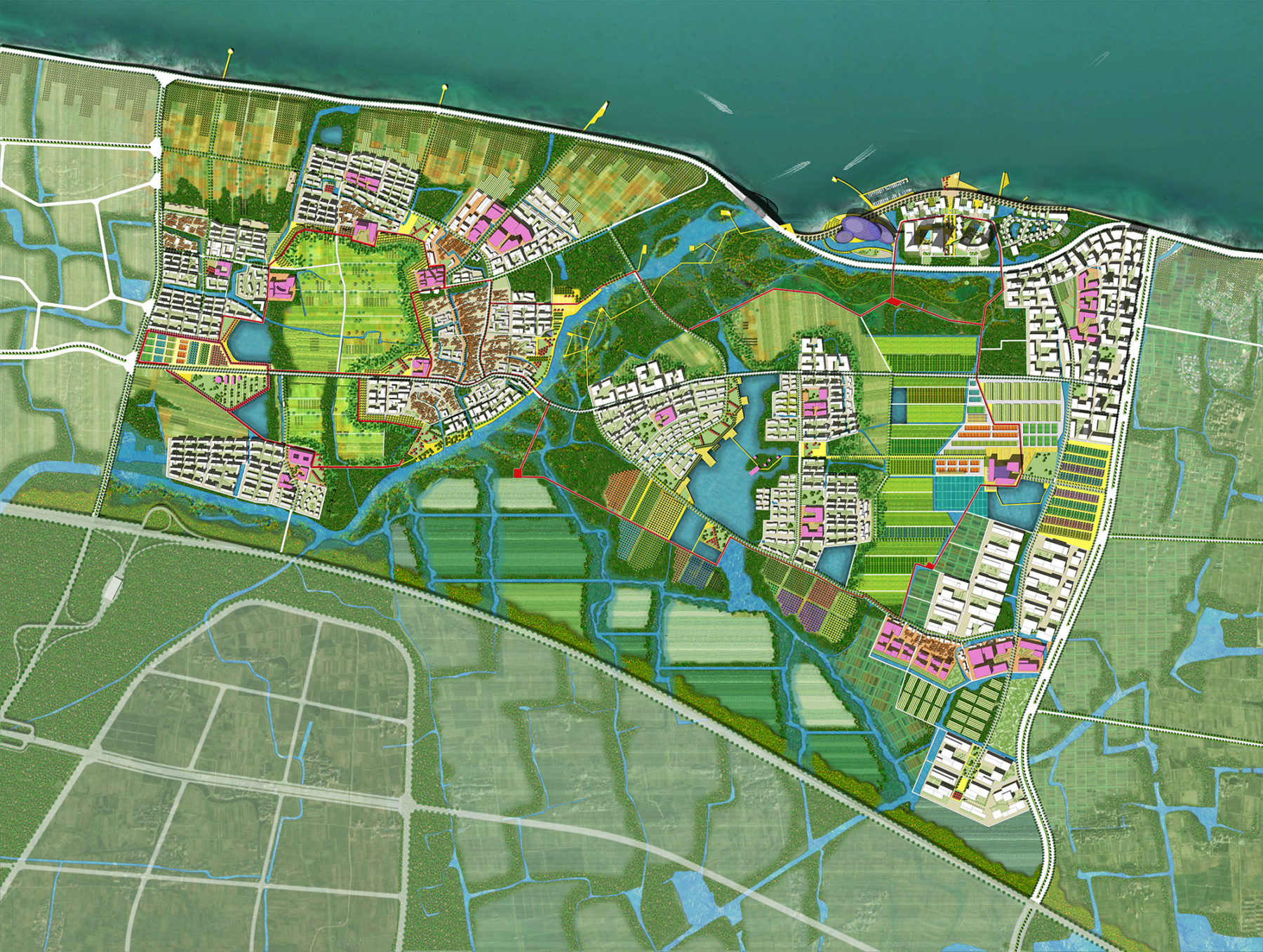
Throughout the property, cultivated land is used to educate visitors about food production, the agricultural supply chain, and the multitude of industries that rely on crops for raw materials. Development parcels are organized around existing settlements, integrating the fabric of the historic villages and creating a unique blend of contemporary uses within retained building stock.
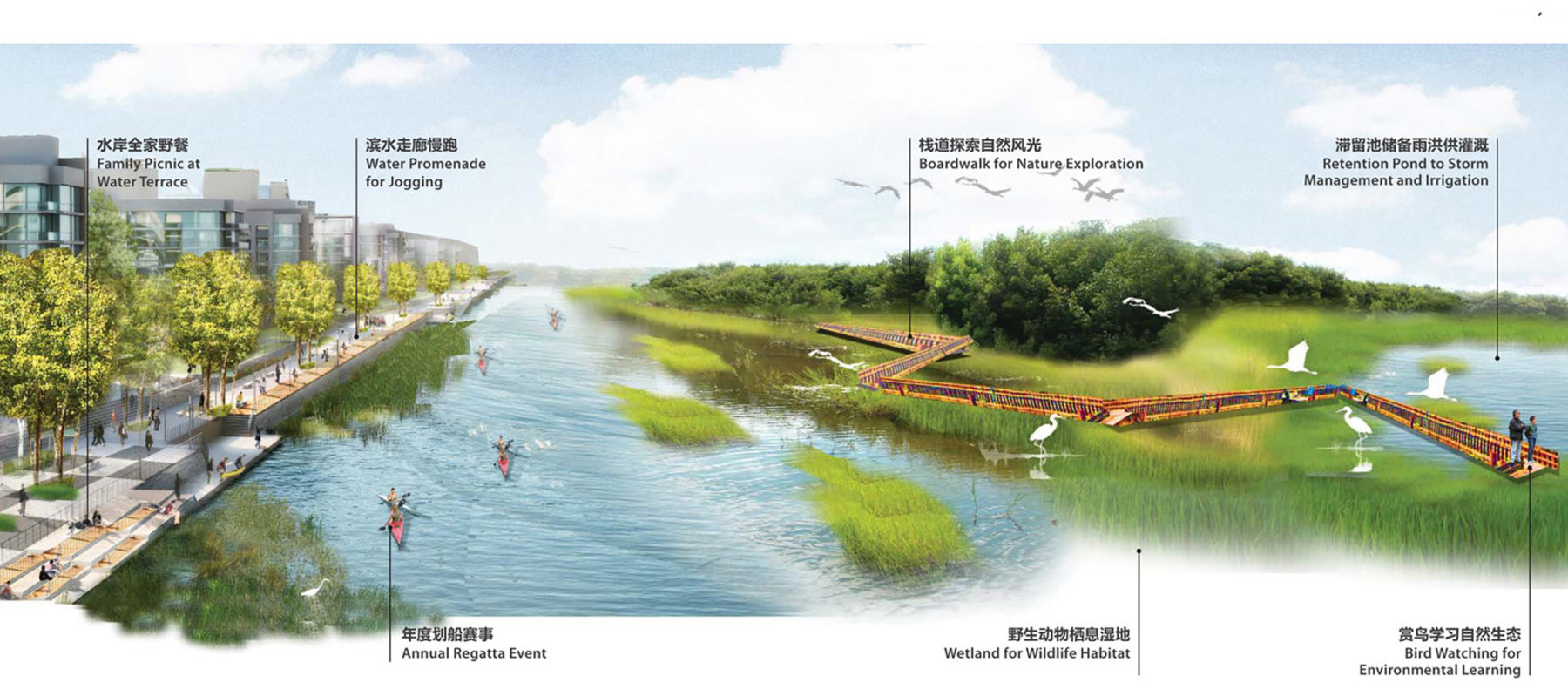
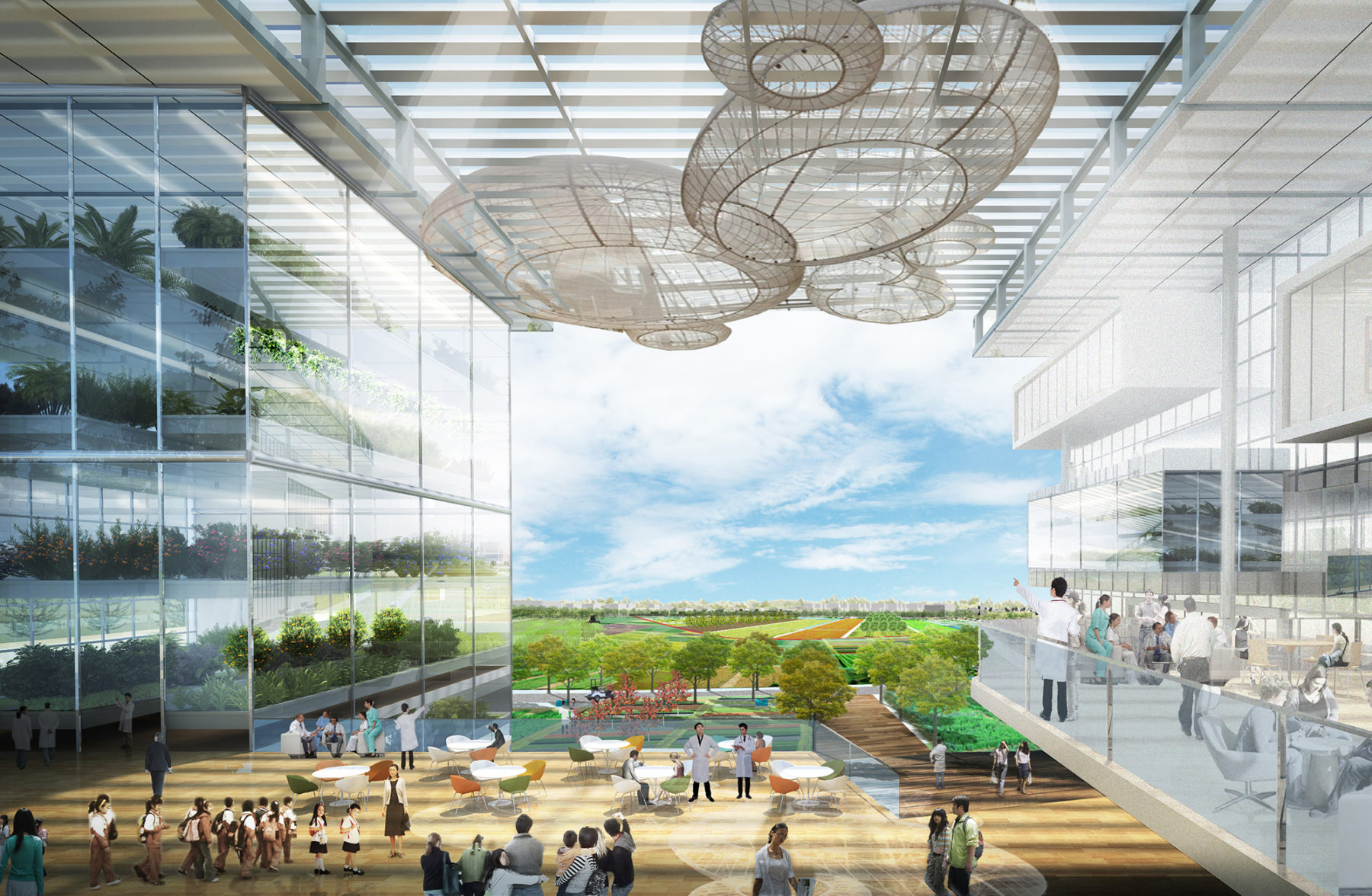
Early in the design process, extensive environmental analysis of the site and its context revealed that approximately 65% of the 1,312-hectare (3,242-acre) property is below the high water level of Taihu Lake. Although existing levees protect the site, seasonal flooding is still common. Sasaki designed a water-receiving landscape—including restored wetlands—that improves water quality and mitigates flood risk. A wetland network is woven throughout the pattern of cultivated lands, corresponding to existing stream flows on the site that drain to Taihu Lake. This connected network provides a nutrient and sediment buffer from the farmland, enhances water quality, and provides habitat for a variety of migratory birds and other native wildlife.
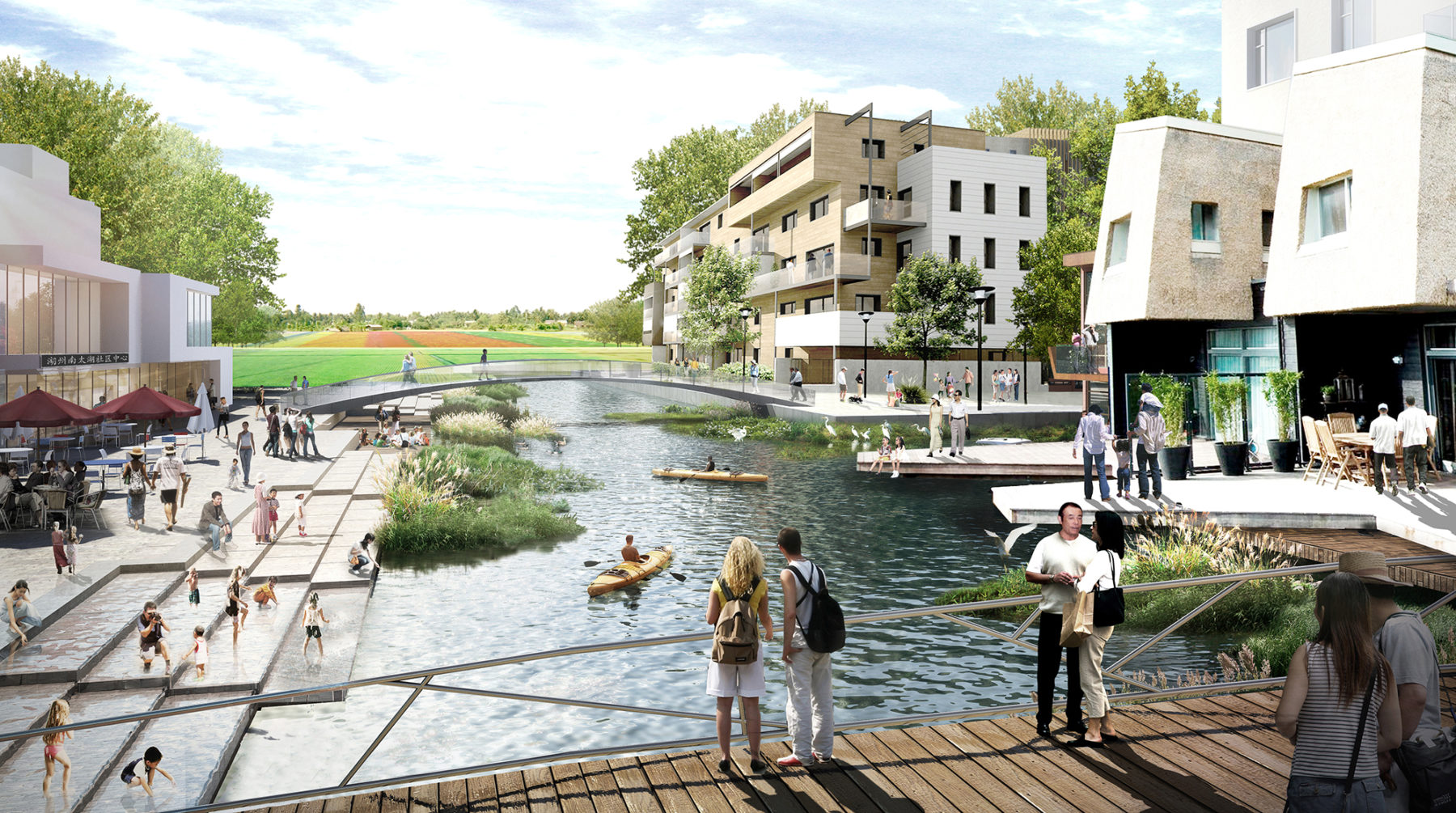
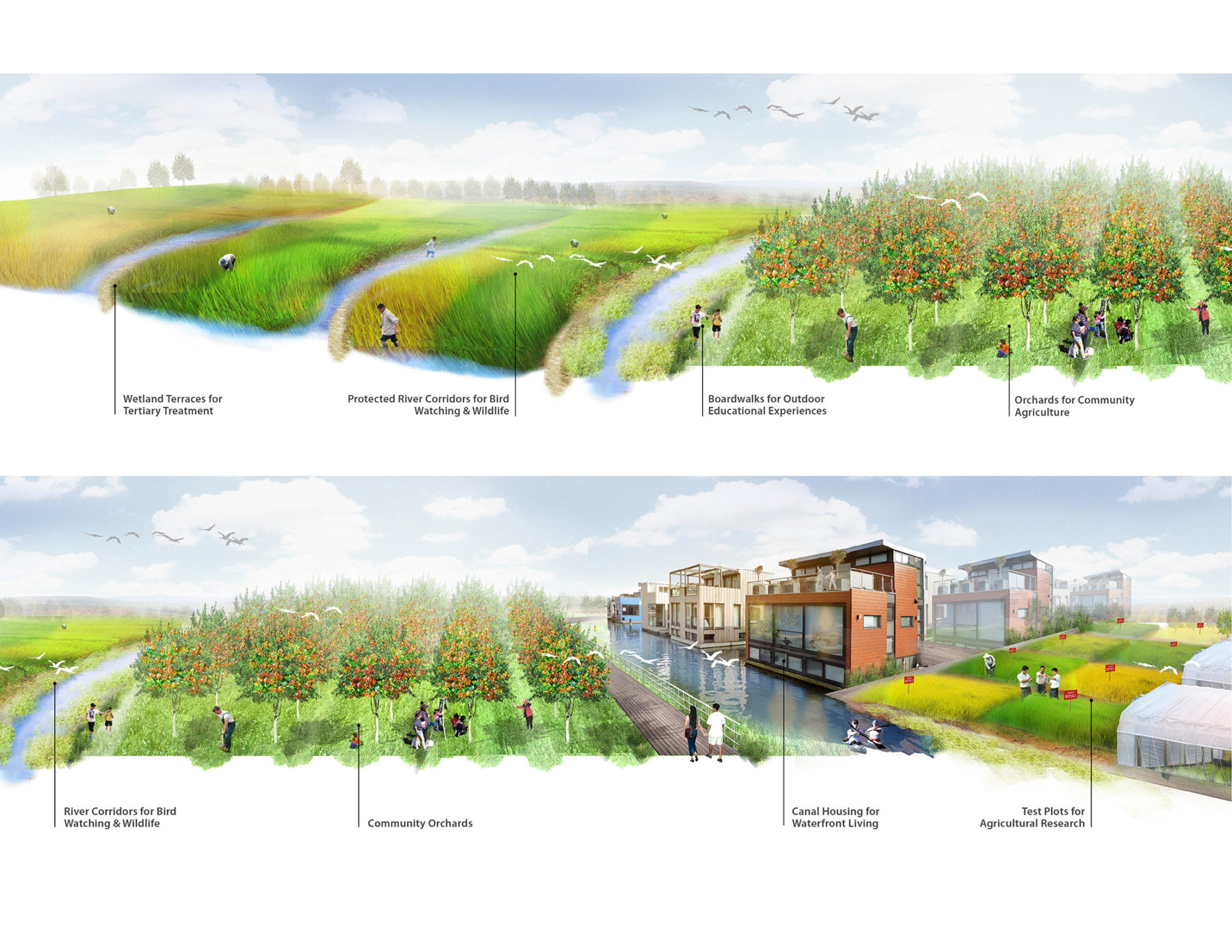
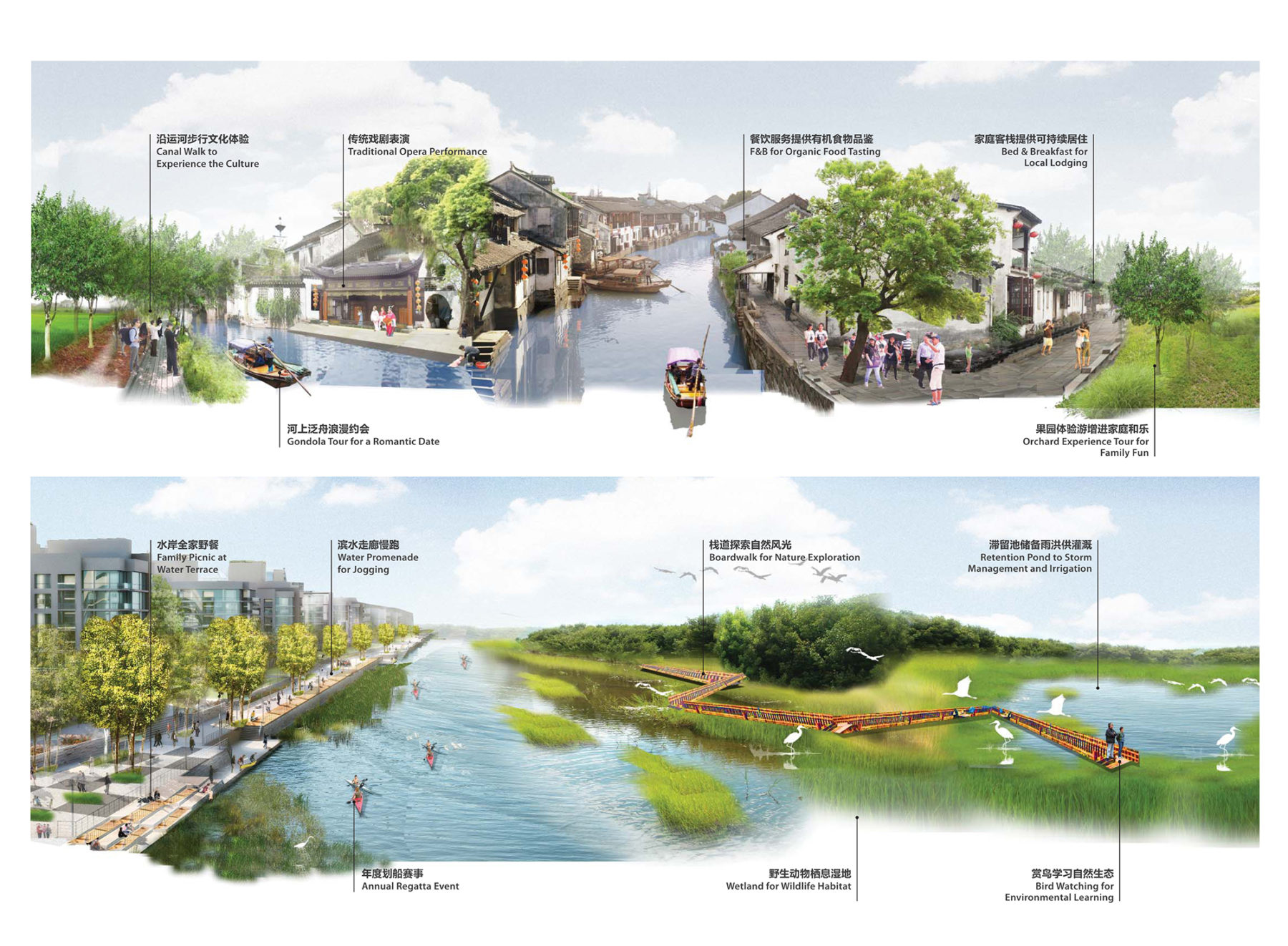
For more information contact Michael Grove.